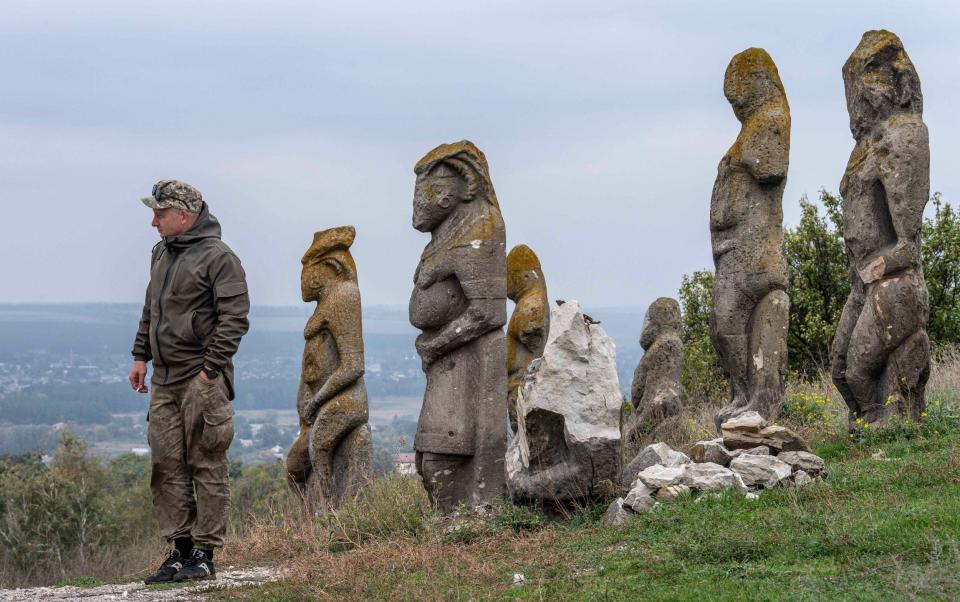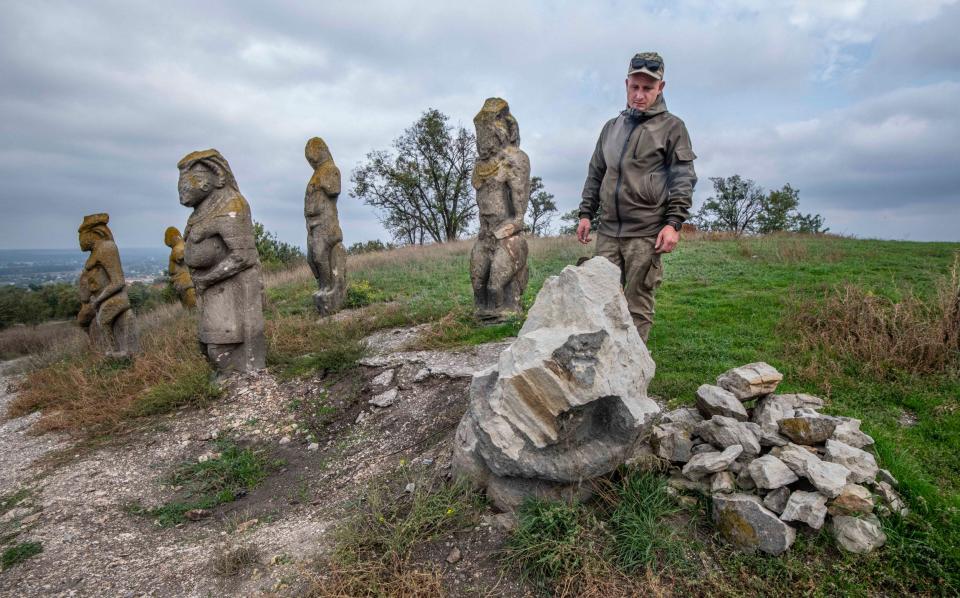Izyum's ancient guardians fall victim to Russia's assault

For nearly a thousand years they have stood guard over Izyum, gazing west towards the setting sun. Their facial features, if they had any, have been worn away by the ages. Some are wearing headdresses and necklaces.
Now the babas of Mount Kremenets have become perhaps the oldest victims of Russia's invasion of Ukraine.
At least one of the ancient statues, which date to between 900 and 1300 AD, was destroyed and others suffered shrapnel damage during fierce fighting here in spring.
The stone woman, who was completely destroyed, appears to have been the victim of a single shell which left a black crater a few feet away.
The statue's neighbours - one potbellied and wearing some kind of loincloth, the other naked - escaped with a few pock-marks.

A Ukrainian soldier who took the opportunity to visit the site on Sunday said the damage was done by Russian artillery during their month-long assault on the city early in the war.
"The Russians shelled from the Izyum side because it was under the control of Ukrainian forces. The whole city is in the palm of [your] hand from up here, you don't even need binoculars to see what is happening in the city," he said.
Russia's assault on Izyum, which controls the gateway between the Kharkiv and Donetsk regions, began on March 3, the second week of the invasion.
Over the following weeks they forced their way into the city from the north in a brutal street-to-street struggle with the outnumbered Ukrainian garrison.
Izyum fortress also suffers damage
By the second half of the month, the Russians controlled the northern side of the Siversky Donets river which winds through the town, while the Ukrainians clung on to the south bank - including the heights at mount Kremenets.
The Cultural Crimes database, a list of culturally valuable buildings and other sites damaged by the invasion, lists artillery strikes on the babas and the Izyum fortress, a 17th century Cossack outpost that shares the same hill top, on March 24.

The statues, locally known as the Polovtsian Babas, were raised by the Cumans, a nomadic people who formed a confederation that controlled the Eurasian steppe between the Danube and modern Kazakhstan in the early middle ages.
Babas means women in Ukrainian and Russian, but the statues depict both sexes and the name is believed to be derived from a Turkic word for ancestor.
Hundreds of such statues survive in both countries. They were usually set up on hill tops in the centre of sacred enclosures associated with ancestor worship, but not necessarily on grave sites.

 Yahoo Movies
Yahoo Movies 